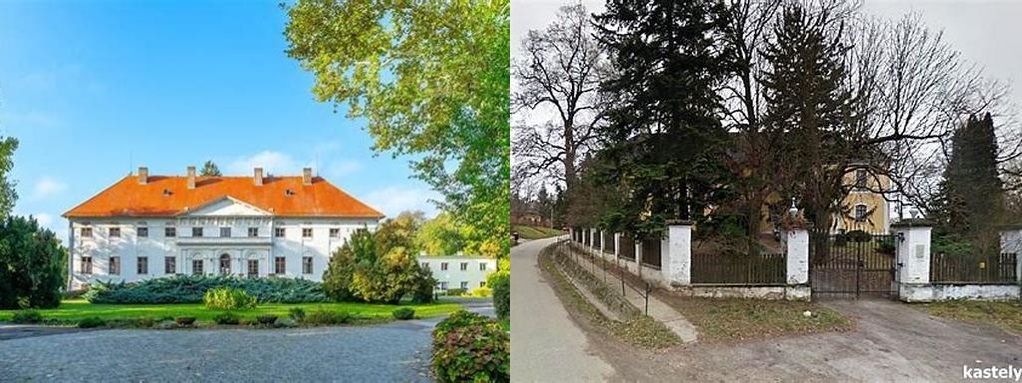
Esterházy-vadászkastély sits quietly in a corner of Oroszlány, a small town in northwestern Hungary, but its walls carry soft echoes of centuries past—stories of grandeur, bustle, and a unique blend of nobility and countryside relaxation. For the modern traveler who thrives on places with veins of history running under their feet, this lesser-known hunting lodge is a rewarding discovery, rich with the details that make a physical place linger in the mind long after a visit is over.
First things first—why would a lodge be built in Oroszlány at all? The town isn’t a towering metropolis nor is it headline material in guidebooks. The answer lies in the landscape itself. The region’s forests, teeming with wildlife, were a natural draw for the aristocracy in centuries past. Enter the influential Esterházy family—yes, those Esterházys, perhaps the most storied aristocrats in Hungarian history. By 1770, when the lodge took its shape under the meticulous eye of Miklós Esterházy, country manors weren’t just about fleeting stays for hunts. They were about cultivating a distinct culture, where music, lively conversations, and indulgent meals unfolded between expeditions into the woods.
What sets Esterházy-vadászkastély apart from other historical homes scattered through Hungary is its approachable intimacy. The architecture is strikingly restrained compared to some of the Esterházy palaces, but it’s all the more welcoming for it. Modeled in a lesser-known late baroque style, the lodge is graced by harmonious proportions and elegant lines—a reminder of the family’s appreciation for comfort and refined taste even in their more “modest” countryside retreats. When you walk through the arched gate, you get the sense you’re joining a continuum: generations of noble guests, prominent composers, and tired hunters returned to these rooms for warmth and rest.
Stepping inside is a treat for anyone interested in atmospheric interiors. The lodge manages to maintain its historic flavor without becoming a sanitized museum. When the light sifts into the wood-paneled rooms, illuminating old hunting trophies and antique furniture, you can picture scenes of 18th-century evenings: the glow of candlelight, the laughter spilling out between the dance of violin strings—after all, the Esterházys were the patrons behind Joseph Haydn’s enduring legacy, so who’s to say his music hasn’t echoed off these walls? The original details, from stuccoed ceilings to the ornate tiled stoves, have survived remarkably well, providing fodder for the imagination.
The grounds surrounding the lodge are just as enchanting. The meticulously curated English park beckons for strolls, bordered by towering ancient trees and dotted with mementoes of past eras—a crumbling fountain here, a line of chestnuts there. Even if you’re not a nature enthusiast, you’ll likely find yourself lingering on one of the benches, letting the gentle wind shuffle through the leaves above while you consider how the hills you can see in the distance might have looked a century or two ago, when carriages and horses provided the only soundtrack in the countryside. Don’t be surprised if deer peek from the woods; the legacy of hunting still vibrates just beneath the present day.
For the truly curious, the estate museum provides an insightful glimpse into how the social tapestry of this region was woven. It doesn’t sugarcoat history, and you’ll leave with a better understanding not just of the Esterházy way of life, but how their presence shaped villages around Oroszlány for generations. You might spot curiosities from former hunts—antlers, paintings, even old maps that reveal the land’s layout in earlier centuries. Guided tours sometimes add thoughtful personal touches: stories about the local gamekeepers, cooks, and servants who kept everything running while the aristocrats played.
Despite the lodge’s aristocratic beginnings, today’s atmosphere is invitingly relaxed. On weekends, locals sometimes make use of the grounds—children darting along pathways while older folks trade stories beneath wide oaks. There’s an unspoken invitation to slow down and appreciate a pocket of Hungary that feels both grand and approachable. No roaring crowds, no endless lines—just the soft hush of history and a sense of life lived at a gentler pace.
If you’ve ever yearned for an experience that contrasts sharply with the hurried step of city itineraries, a day at Esterházy-vadászkastély in Oroszlány might be the answer. Here, the essence of centuries seeps not just from architecture and artifacts, but from the peaceful setting itself. It’s the kind of place you’ll want to tell friends about, and maybe, quietly hope remains a little secret for just a while longer.





